The ribbon seal, known for its extremely rare striped fur in nature, was discovered along the coast of Washington State, USA. This unique seal species features beautiful striped patterns all over its body.
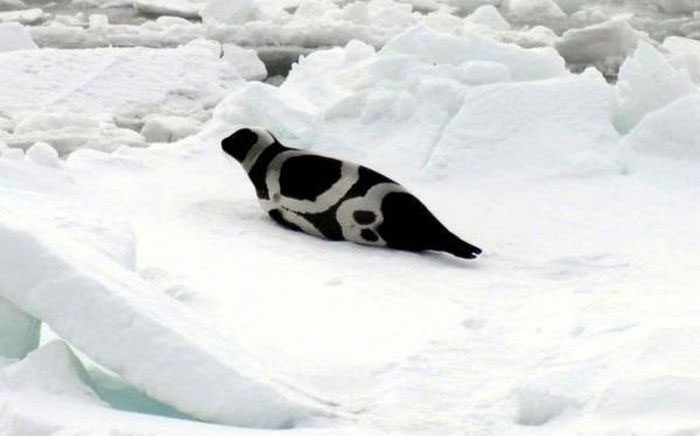
The scientific name of the ribbon seal is Histriophoca fasciata. They are a medium-sized pinniped belonging to the seal family.

With its black and white striped fur, the ribbon seal might remind many of a first-generation hybrid between a seal and a zebra.

The ribbon seal, a unique species with beautiful striped patterns across its body.

The ribbon seal is a rare species that inhabits the Arctic and sub-Arctic regions of the North Pacific, particularly in the Bering Sea and the Sea of Okhotsk.

Ribbon seals are distinguished by their striking appearance, featuring black or brown fur with four different white patches, including a white stripe encircling the neck, one around the tail, and a white circle on each side of the body.

With their black and white striped fur, ribbon seals look incredibly adorable.

Typically, newborn ribbon seals have white fur. It takes about 3 to 4 years for their “zebra” stripes to become prominent.
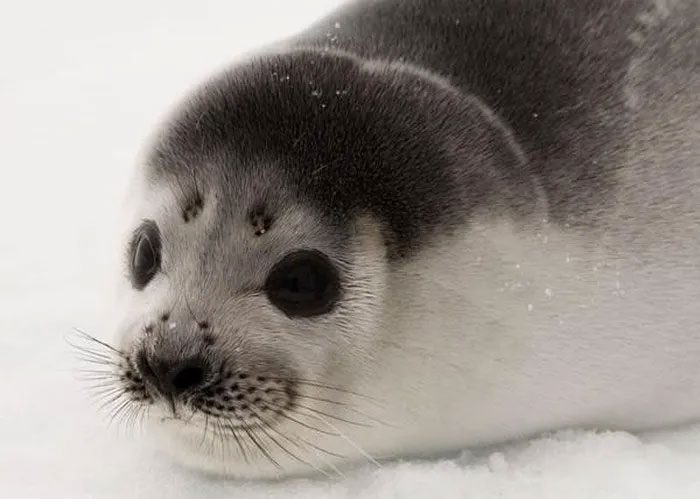
The adorable face of a young ribbon seal.
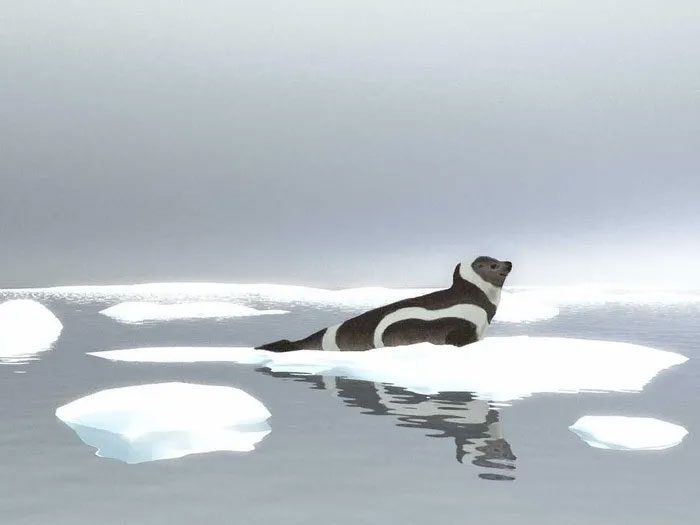
This species of seal can grow up to 1.6 meters in length and weigh about 95 kilograms. On average, they live between 20 to 25 years.
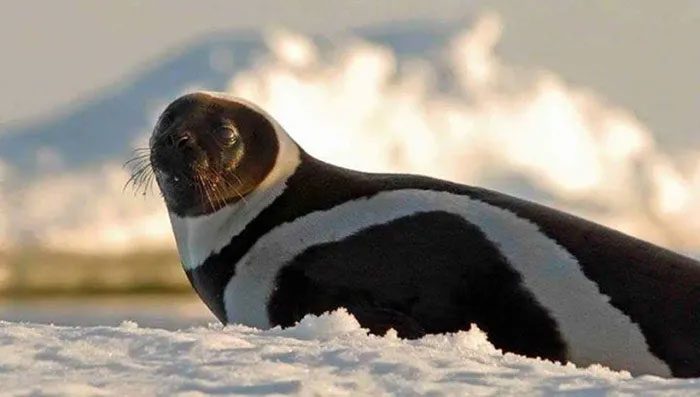
They primarily reside in the frozen Arctic regions, rarely migrating to land.
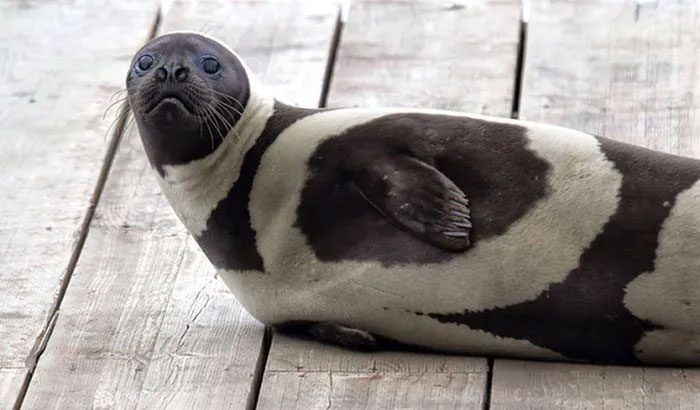
Due to their beautiful fur and high value, young ribbon seals are often hunted by humans.

This species has been heavily hunted for its fur, leading to a severe decline in their population.
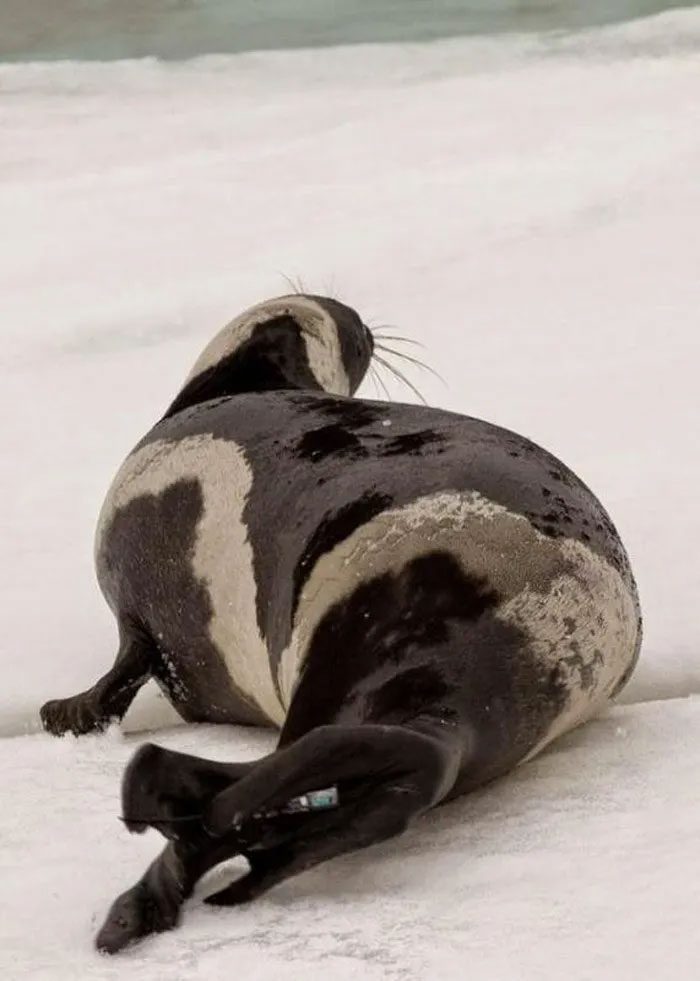
The population of ribbon seals is drastically decreasing. Therefore, they have been listed by international animal protection organizations as a rare species in need of conservation.



















































